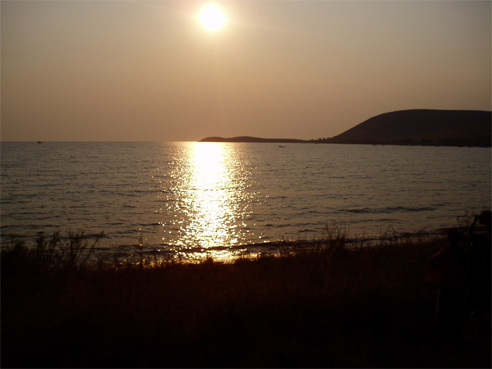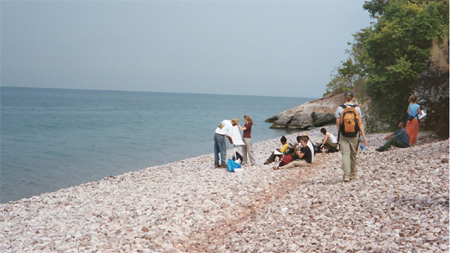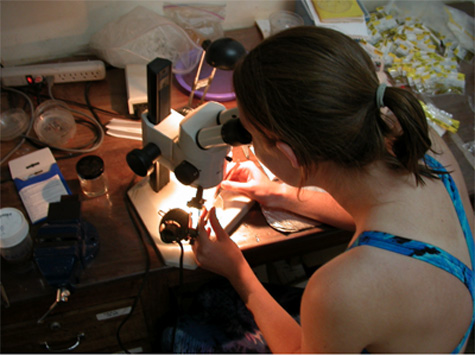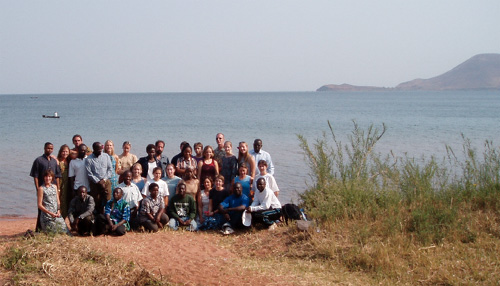Life History and Shell Morphological Variation in a Gastropod Species Flock from Lake Tanganyika, East Africa
Whitman College, Walla Walla, Washington
I spent the summer of 2003 in Kigoma, Tanzania as a student in the Nyanza Project, a US National Science Foundation funded Research Experience for Undergraduates (REU) focused on studying the Lake Tanganyika ecosystem from a multidisciplinary perspective. Lake Tanganyika is an amazing and unique place to work: it is the second deepest lake in the world (and the deepest of the East African rift lakes at 1470m), and at about 10 million years in age is one of the oldest lakes in the world (and the oldest of the African Rift Lakes). This makes it a particularly fascinating place to study evolutionary biology: hundreds of endemic species contribute to the incredible species diversity of the ecosystem. My research focuses on the evolutionary diversification of an endemic genus of gastropods in the lake: I am looking at life history and shell morphological variation in several species present in the Kigoma region.
To read more about the Nyanza Project, go to http://www.geo.arizona.edu/nyanza/
 Sunset over the lake. |
 Class on the beach. |
 Lots of hard work! |
 The Nyanza Team, 2003. Note the tilted fault blocks in the background which make up the margins of this rift lake (spectacular geology AND great snail habitat...) |
Return to Whitman Geology Homepage
Return to Whitman College Homepage